-
P6 go to Roamers part 5
Theme 5: Spirit Worlds
We designed and drew our tree spirits on pieces of slate and drew cave style paintings of something we enjoyed at Roamer’s wood or something in the wilderness.
We toasted marshmallows and ate biscuits, popcorn and blueberries.
We did a scavenger hunt. We had to find stuff you find in the woods such as plantain leaf, sycamore leaf, beach leaf, nettles, moss, lichen, gorse flower, yarrow, cooch grass flower
I enjoyed eating marshmallows and popcorn – Sienna I enjoyed the art and the food – Orla
I enjoyed drawing our tree spirts- Sylvie
I enjoyed eating and doing the art – Katelyn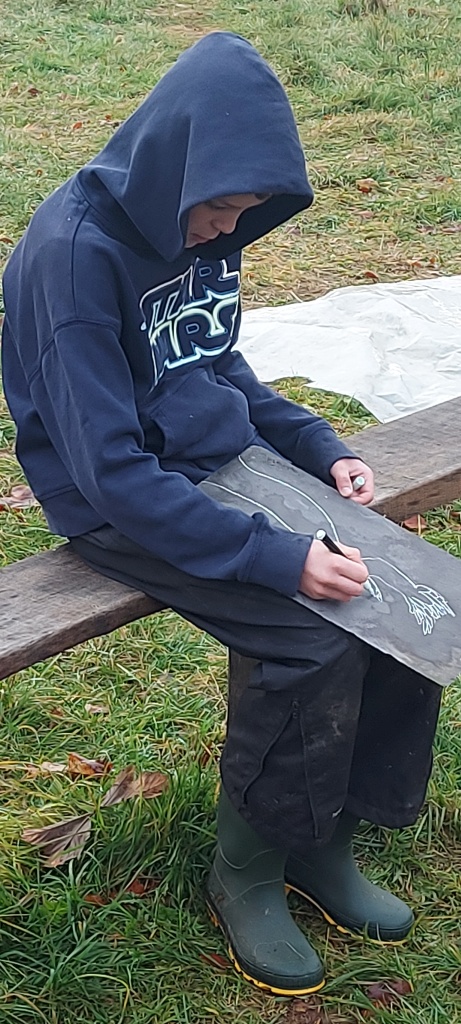
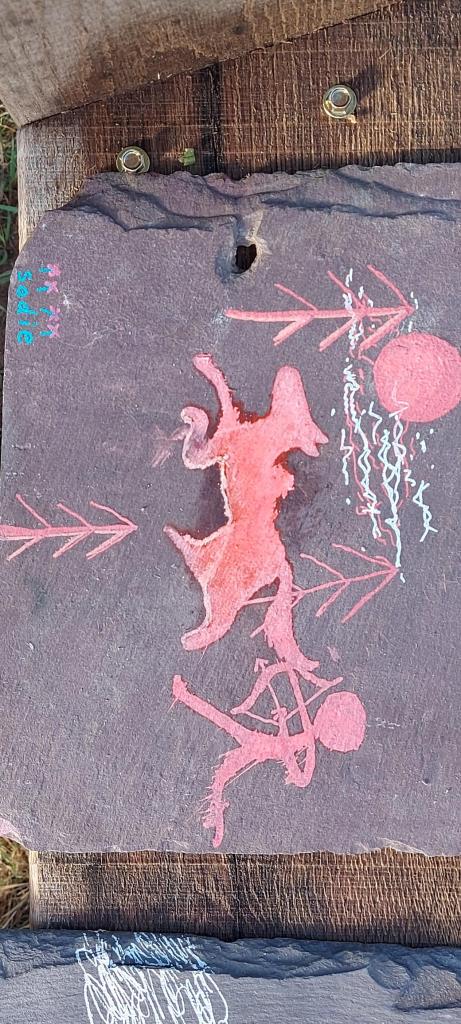
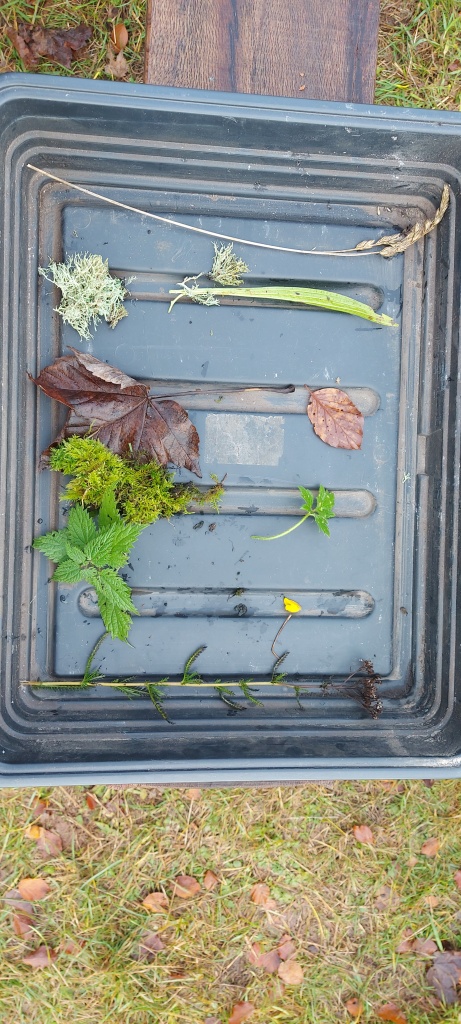



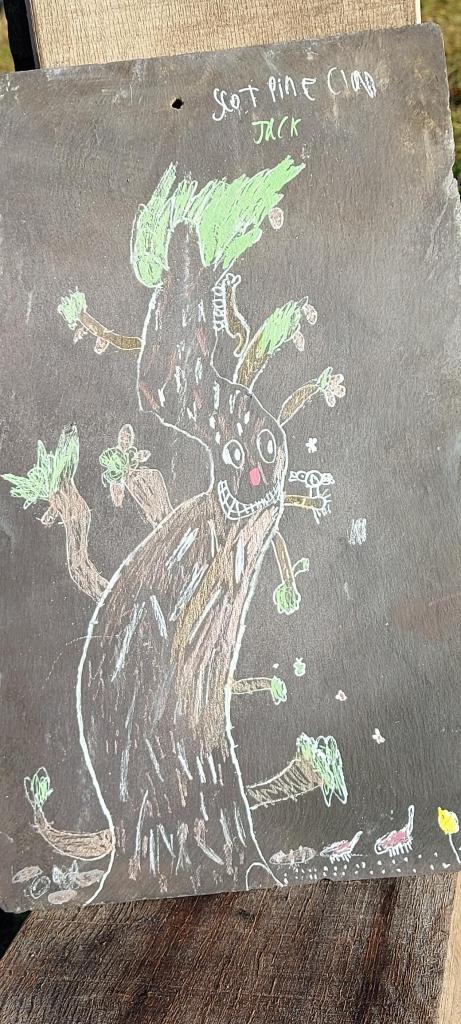

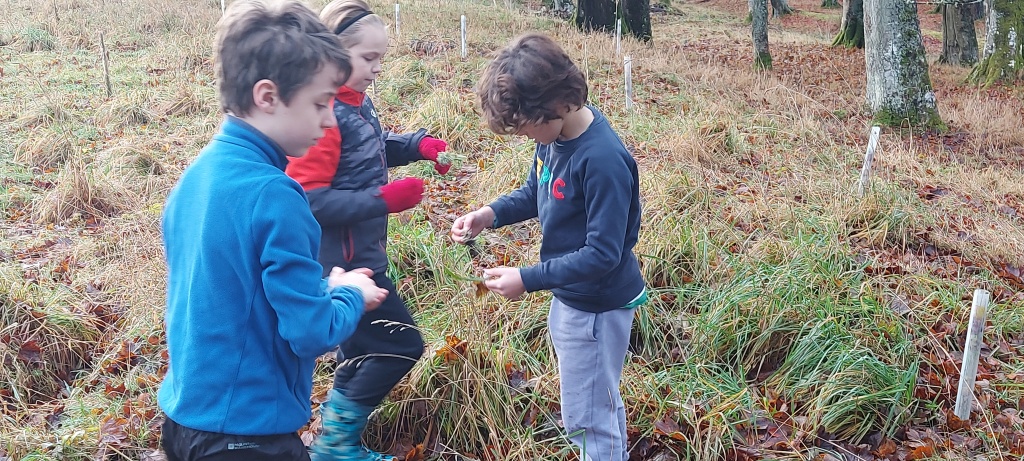
-
P6 go to Roamers part 4
Theme 4: Tracking and Hunting
Session four was about tracking. We were working in our clans.
-We built trails using the symbols we had created in class for other clans to follow.
-we identified animal foot prints.
-we followed another Clan’s trial using a key they had created and found our prizes, then ate them (yum yum)
-we found out about some small mammals from some University students who were trapping voles. We looked at the different traps and they told us how they worked.
I enjoyed making and figuring out riddles and eating Maltesers – Rupert
I enjoyed following people’s trails and finding out about foot prints -Andrew I enjoyed being in my clan and finding my prize – Ella
I enjoyed making the trails for other people – Katelyn
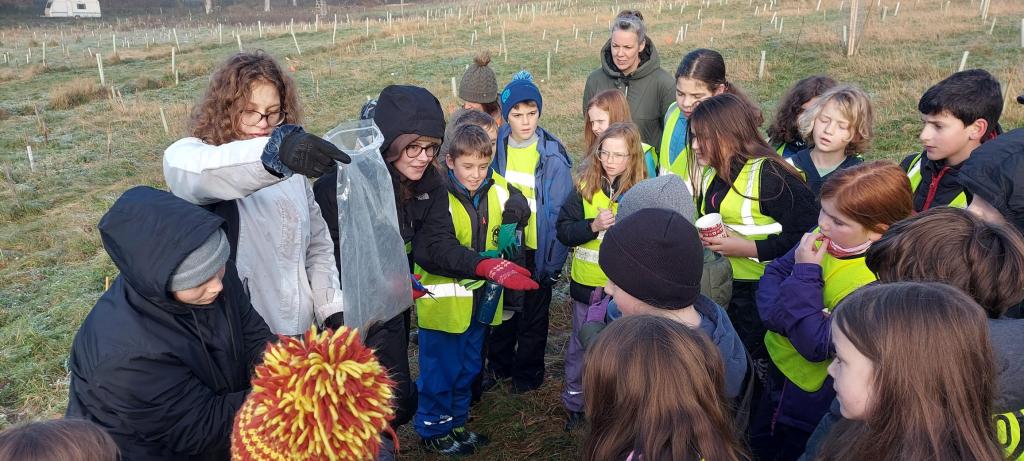



-
P6 go to Roamers part 3




The main activity of this session was to build waterproof shelters. We did this in our clans.
The other small activities we did were; baking bread on a fire, cooking popcorn and testing the how waterproof our shelters were. To do this we poured water from a watering can on them.
I enjoyed eating bread and sitting by the fire -Cami
I enjoyed watching the other groups shelters and seeing if they worked (and eating bread)-Max
I enjoyed watching Isaac getting wet because their shelter was not water proof (and me getting wet)- Harris
I enjoyed baking the bread and making the shelter-Owen
I enjoyed making the shelters to see if they would be waterproof – Isi -
P6 go to Roamers (part 2)
Session 2: The Woodland Supermarket
The theme for our outdoor learning was the woodland supermarket and we learnt about some ways they made materials back in Torak’s time.
There were three stations:
Station one – we were squeezing apples to make apple juice.
Station two – we were using nettles. We used the leaves to make nettle soup and the stem was made into cord.
Station three – we dyed wool and fabric with dyes made from things like elder berries or red cabbage.
I enjoyed the apple juice because it wasn’t sweetened – Frany
I enjoyed all of it because it gave us a sense of how people in Torak’s time would have lived – Jess I enjoyed it because it was trying something new – Ali
I enjoyed the nettle soup because we got to see it made – Evan
I enjoyed the dyeing because it was interesting to see it change colour in an acid or an alkaline – Sophia



-
P6 go to Roamers part 1
We made clans and named them after trees in Roamer’s Wood and then we learned about our clan’s tree.
Next we went up to the tree alphabet and learnt all about the solar and lunar calendar and how trees relate to it.
After that we got into our clans and shared the facts we learned about our trees. Then we made mini clan camps and a clan identity.
I enjoyed learning about the tree calendar- Isaac
I enjoyed making the mini clan camps- Orla and Jack
I enjoyed learning about the different trees- Erin
I enjoyed painting my face with mud and learning about the trees- Sam



-
Many bugs make healthy soil!- sampling soil microbial communities in Roamers Wood
Progress on the development of Roamers Wood is coming along nicely, with 5000 trees already planted as well as a variety of bushes, plants and flowers planted more recently with help from WLPS pupils. The latest school visit consisted of a number of activities centred on biology, ecology and the environment, and one of the more unusual activities involved cotton underpants! Pants that had been buried in the ground were dug up to see how many holes had been made in them. The holes are made by microbes such as bacteria and fungi that live in the soil eating the cotton, so more holes in the pants indicate that the soil is healthy and full of microbes.
These soil microbes are very important for plant health. We know that for plants to grow and thrive, they need water, sunlight and nutrients. But did you know that one of the roles of microbes living in the soil is making sure plants get the right types and levels of nutrients? Plants need nutrients such as carbon and nitrogen to stay healthy and grow properly, and there are different kinds of microbes that can process these to make sure there is not too much or too little available to plants. In return, the plants provide homes and food sources to the microbes, so everyone benefits from the interaction!
Sometimes plants cannot use a nutrient in one form, so microbes can convert it into a different form that plants can use. This is well known for nitrogen; some plants such as beans, peas and clovers are known as legumes. These plants have bacteria living on their roots that take nitrogen from the air (which plants can’t use) and convert it into a form that plants are able to use.
Fungi are another type of microbe that can help plants get the nutrients they need. Fungi can grow long tendrils (called hyphae) through the soil which can interact with plant roots and transport nutrients to the plant from further away. This means that plants can get nutrients from sources that they could not reach otherwise.
Just like us, where different people with different skills and interests come together to make a vibrant community, these soil microbes rarely work alone. For example, one microbe may be good at converting nitrogen, while another is better at processing another nutrient. One may work best when living in or on the plant directly, while another might prefer living free in the soil near the plant. Microbes may prefer different food sources. This means that communities of diverse soil microbes need to work alongside each other in an ecosystem to ensure that soil and plants are at their healthiest. This is why we want to dig up very holey pants! In addition, physical and chemical changes to the soil as a result of, for example, farming practices or climate change can change the mass and diversity of soil microbial communities, so it is important to be mindful of how our actions can affect these communities and therefore soil and plant health.
For researchers in the fields of ecology and agriculture, knowing what different kinds of microbes are in soil with different kinds of plants is very useful. It lets us build a picture of which microbes interact with different kinds of plants and gives us an idea of soil health and how to improve it for growing, for example, food crops. Therefore as part of the Roamers project, soil samples from different sites are being collected each month in order to analyse the microbial communities and their changes over time as the Roamers project progresses. These soil samples can be dried to preserve microbial DNA, which we can extract from soil and analyse in the lab to find out which kinds of microbes are in that soil sample at that time. By comparing microbial DNA results from each site over time, we can see how the soil microbe communities change and develop as different types of plants are introduced to Roamers and this could help us to ensure that the soil stays healthy and the Roamers plants thrive!
FIG. 1: Summary of plant-microbe interactions involving nutrient uptake and use.

FIG. 2: For the soil sampling project, soil is being collected from the sites marked in blue each month, which can then be analysed in the lab to look at changes in microbial community diversity over time.
-
WLPS visits Roamers
In late April, the P4, P5, P6, and P7 year groups each visited Roamers for half a day of outdoor activities. After a cold start, most classes experienced lovely sunny weather. We were all amazed at the transformation to Roamers by the 5000 trees that have been planted since our last school visit in October 2022.
What did we do?
We had lots of activities to choose from, including soil science, bug biology, arts and crafts, planting berry bushes, and sowing wildflowers.
‘Soil my pants!’
We loved the ‘treasure hunt’ to find and dig up pants that had been buried in the soil. We compared Roamers pants to a new pair and a pair that had been in a compost heap. We learnt that life in the soil, especially bacteria and fungi, eat the cotton in the pants, so the healthier the soil, the more holes there are in the pants. Roamers soil is not as healthy as compost, partly because it is still early in the spring and the soil is still cold, and also because the soil life is not yet being fed with lots of leaves every year. The Roamers team have re-planted the pants so we can dig them up over the summer and see how they are progressing.
Bug life
We made a new bug hotel at the top of Roamers where it is sunny, which provides different conditions to suit different bugs compared to the bug hotel we made in October. We also collected lots of invertebrates and looked at them using computer screens attached to microscopes that magnified the critters more than 50 times. Seeing millepedes looking like they are armour plated, the pincers of beetle larvae, and the antenna of slugs waving around, was amazing. Some of us found a New Zealand flatworm which wasn’t good news because they eat earthworms.
Arts and crafts
One of the areas within Roamers is going to be a celebration of the Celtic tree alphabet, which is based on a Fibonacci spiral and represents the yearly calendar. Each of the 13 ‘lunar months’ is represented by a different native tree species and their stories of medicine, lore and magic. We each made a painting of the tree representing our birthdays to display in the alphabet gallery.
We also collected leaves with interesting shapes to try out cyanotype prints by placing leaves on special paper that reacts to the UV in sunlight. Roamers also has a welcome sign thanks to the P7 class, and some of us made willow baskets filled with nesting material for birds that we hung from trees.
Thanks to Eric Small for kindly donating all the slates we used to make a roof for the bug hotel, make our Celtic tree alphabet art, and produce the welcome signs.
Planting and sowing
There is an area of Roamers with power lines which means it is not suitable for tall trees, so we planted honey berry and current bushes under part of this area. Hopefully, in 2 years time we – and wildlife – will be able to harvest tasty berries in the late summer. To help protect the bushes from hungry deer, we made a circular fence of old Christmas trees around them. We also sowed lots of wild flower seeds in the Celtic tree alphabet to highlight this area for those visiting over the summer. Now we need rain so the seeds can germinate.
How to get involved?
Anyone and everyone are welcome to visit and enjoy Roamers. You can find access points at the top of the Loan and via Medwyn Road. Just look out for our sign!
Like more info? See SustainableWLD.co.uk
—————


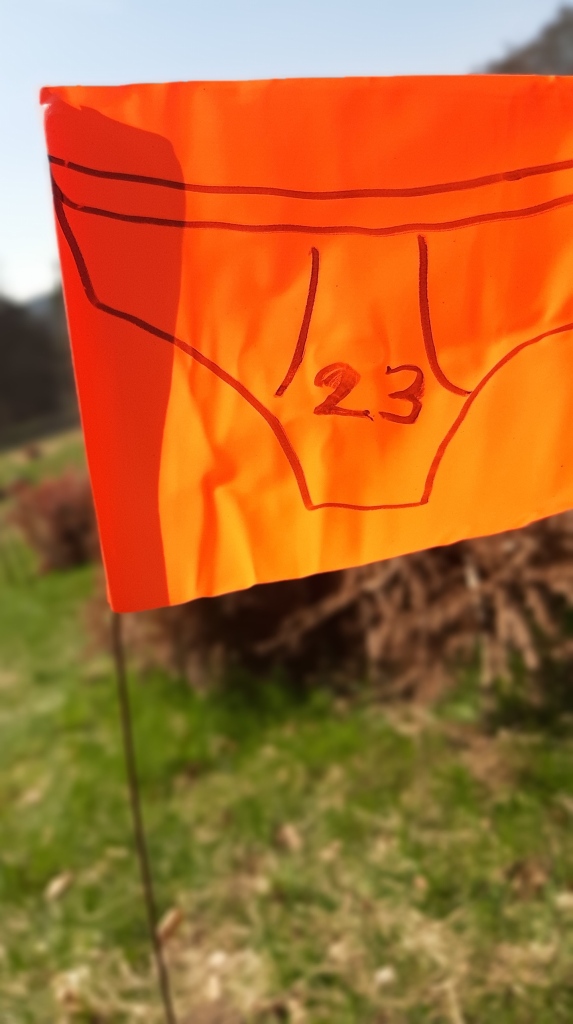


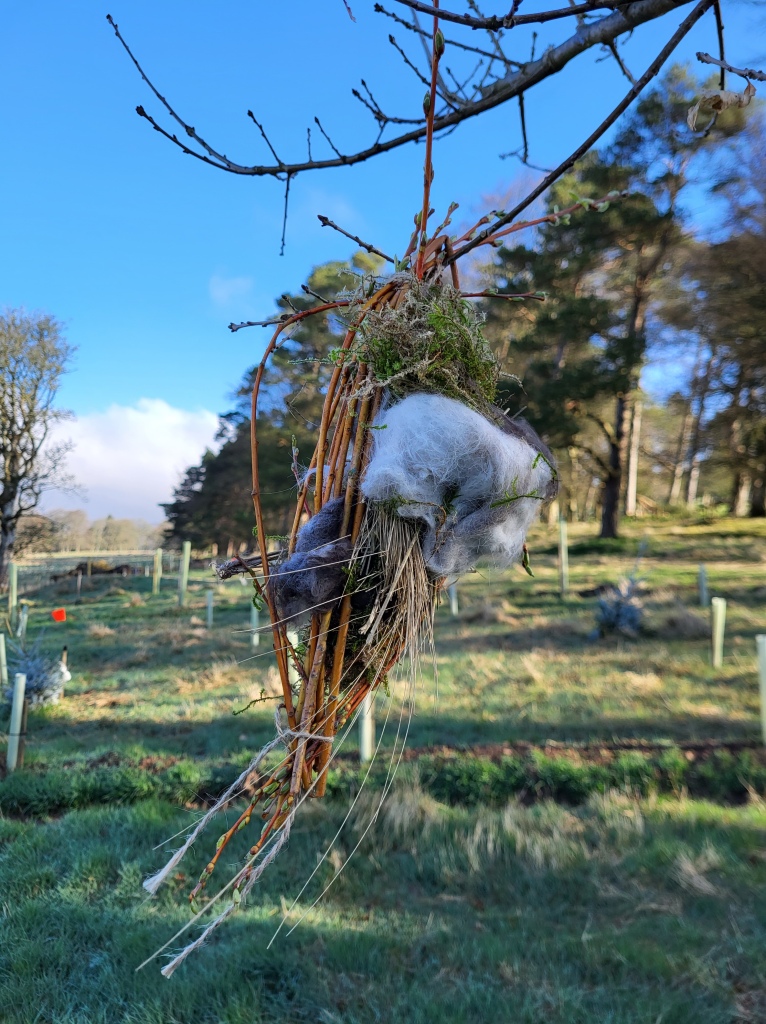

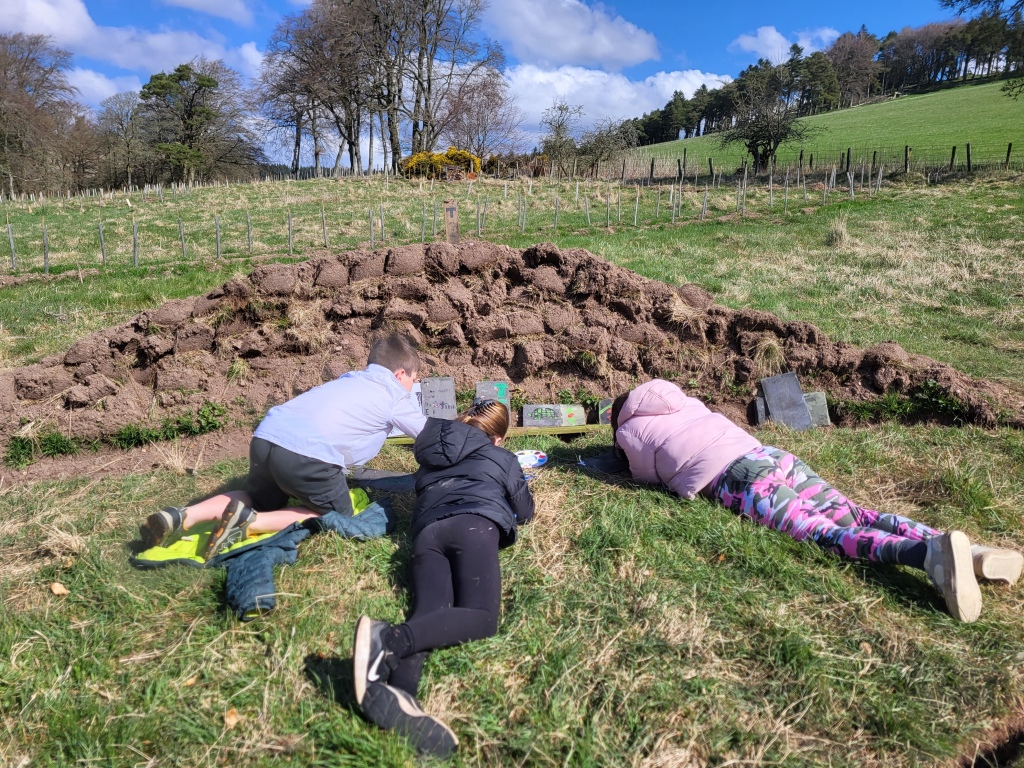


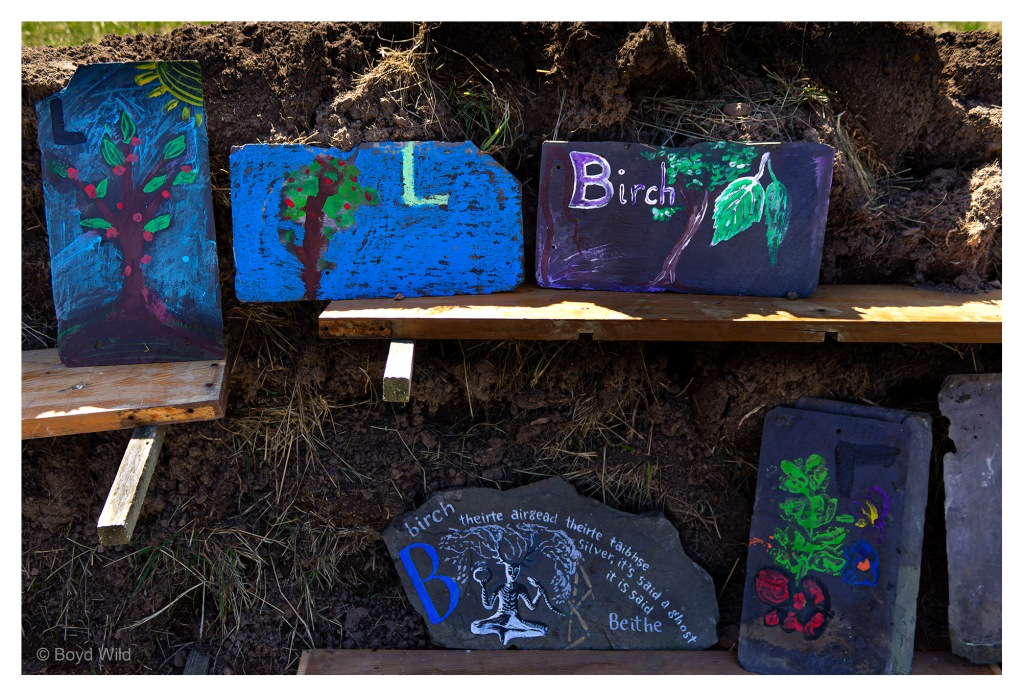
-
WLPS has a tree nursery!
March 2023
In late February, we held a ‘big dig day’ at WLPS and invited our parents, carers, and community members to help us prepare for the next growing season. One of the main tasks was to create a tree nursery so we can grow trees from seeds and tiny saplings until they are big and healthy enough to plant in Roamers.
Why do we need a tree nursery?
Roamers now has over 5000 trees planted in it! These are mostly tiny trees – less than an A4 page in height – so they won’t all survive. Also, deer are likely to find tiny trees quite tasty! Our tree nursery will look after trees until they reach the hight of a P7 pupil, which means they will have a better chance of surviving being eaten when moved to Roamers. We are growing each tree in its own deep pot. This should ensure they develop a healthy root system that will give them a great start in Roamers.What trees do we have so far?
Our mini oak trees, that we started looking after last autumn, have been joined by more than 100 sweet chestnut trees. Hopefully, we will be collecting their nuts in 40 years time! We also have holly, rowan, hazel, and beech. We have named many of the trees. Please feel free to visit and see which names you can spot – you might recognise some of our teachers’ names! Soon, we will have a sign for our tree nursery.
What is next?
We have filled 3 of the 4 raised beds in the tree nursery so far. Which has used up some of the 11 (!) bulk bags of soil and compost in our playground. Part of our outdoor learning will include looking after the trees and watering them, and we expect we can plant them in Roamers in 2-3 years.
Our 4th raised bed is going to be dedicated to growing berry bushes for Roamers. There is an area of Roamers with power lines which means it is not suitable for tall trees, so this will be full of berry bushes that we can harvest as well as providing food for wildlife.How to get involved?
Anyone and everyone is welcome to visit and enjoy Roamers already. You can find access points at the top of the Loan and via Medwyn Road.
Like more info? See SustainableWLD.co.uk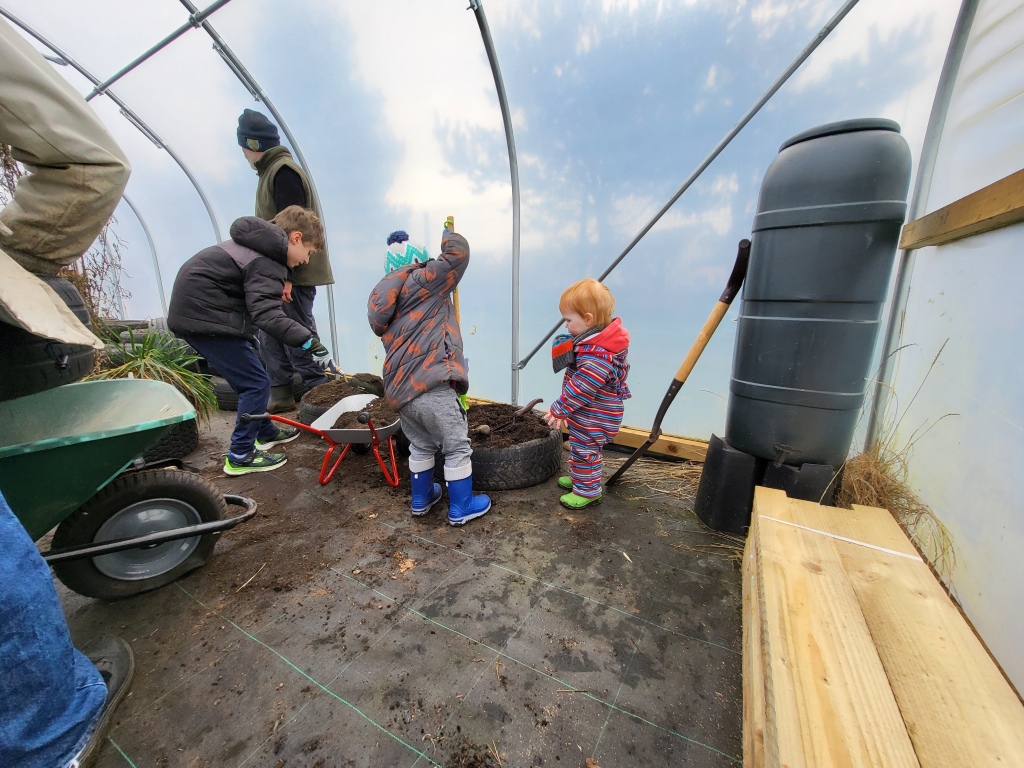

-
Introducing Roamers
What is Roamers?
Sustainable West Linton and District Charity (SWLD) is creating a community woodland, called Roamers Wood, for the benefit of the community and future generations. This opportunity has arisen through a generous local benefactor granting the community a long-term lease on the land, with SWLD custodianship.
What is planned for Roamers?
Roamers will provide a haven for biodiversity with wildlife-friendly trees and plants, as well as a place for learning in nature. Already, our pupils have been involved in helping develop this woodland by planting trees, creating a bug hotel and raising seedlings from local seeds to eventually plant up at the woodland.
In due course, Roamers will contain a Witches Cauldron area for plants associated with witchcraft, traditional medicines and herbal cures. A Tree Alphabet area will be a meeting point for educational purposes, and a traditional Roundhouse will be built to prompt building skills and an understanding of the history of the area. Roman armies, royals, drovers, and travellers of every kind once passed through the area and Roamers
will incorporate translations of this rich history.How to get involved?
Anyone and everyone is welcome to visit and enjoy Roamers already. You can find access points at the top of the Loan and via Medwyn Road. If you would like to get involved in planting the 5000+ trees needed, there will be planting events every Saturday until the end of spring 2023 (weather permitting!).
Like more info? See SustainableWLD.co.uk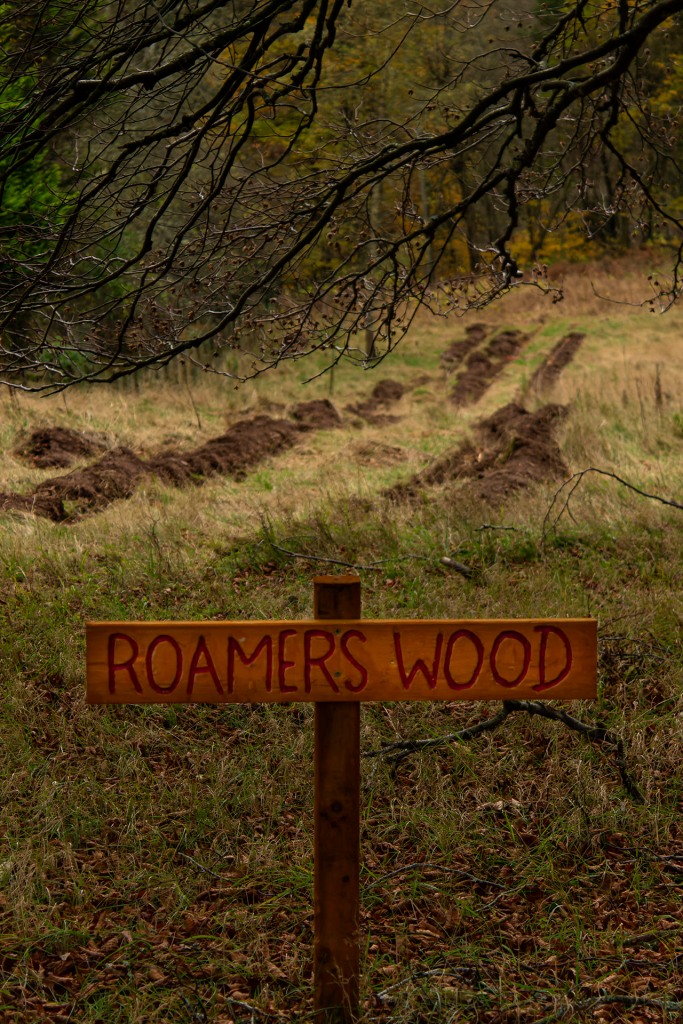
Roamers is open all humans and wildlife. [credit: Boyd Wild]

Roamers is the triangle shaped field and sits within the beautiful landscape of West Linton, bordering on the Pentland Hills. [credit: Macbie Photography]
Designed with WordPress
-
Welcome to ROAMERS WOOD WEBSITE
A place where you can:
See all the new and exciting things going on in Roamers
Get more info about this AMAZING project !
As well as learning more about the fabulous nature around us



-
Subscribe
Subscribed
Already have a WordPress.com account? Log in now.